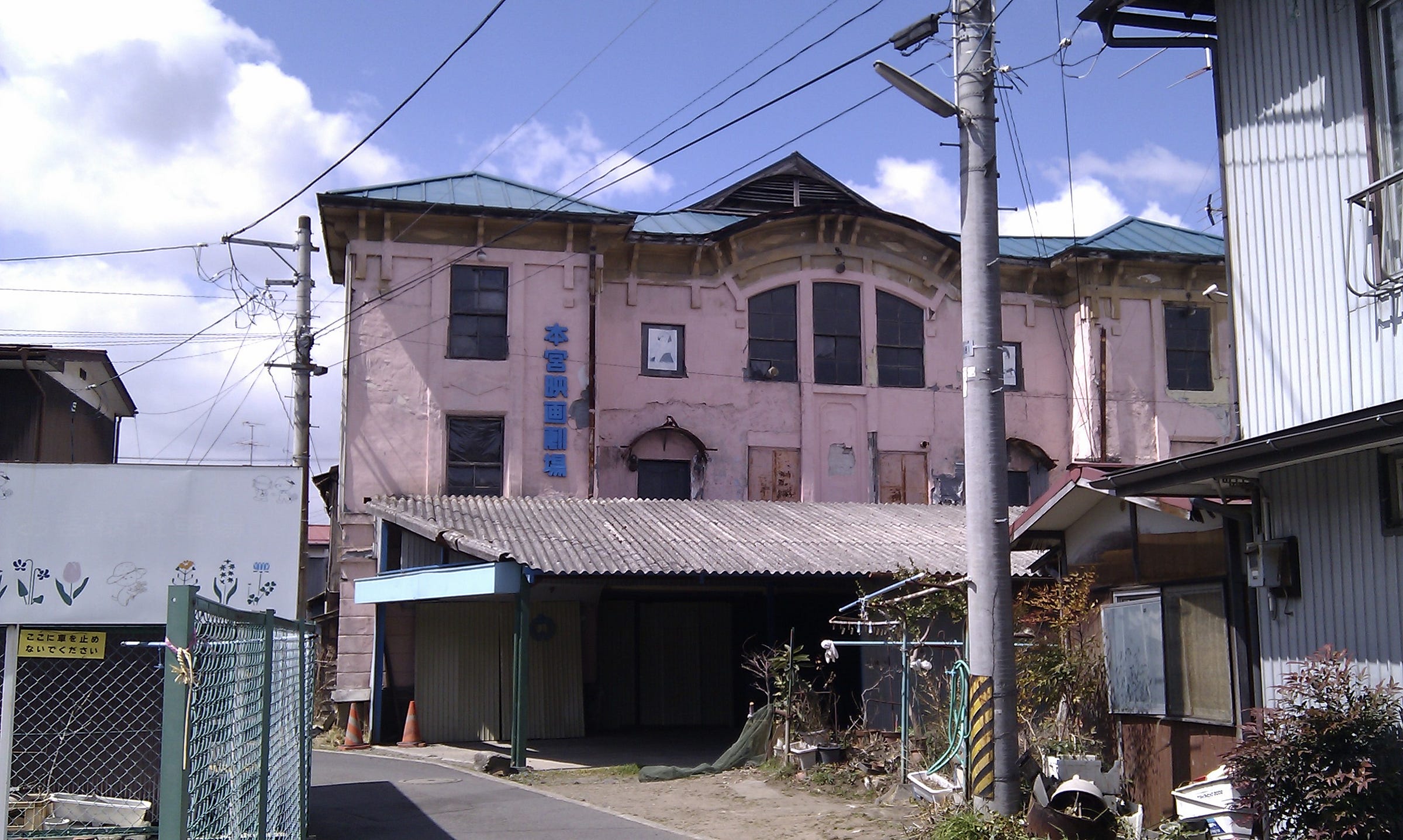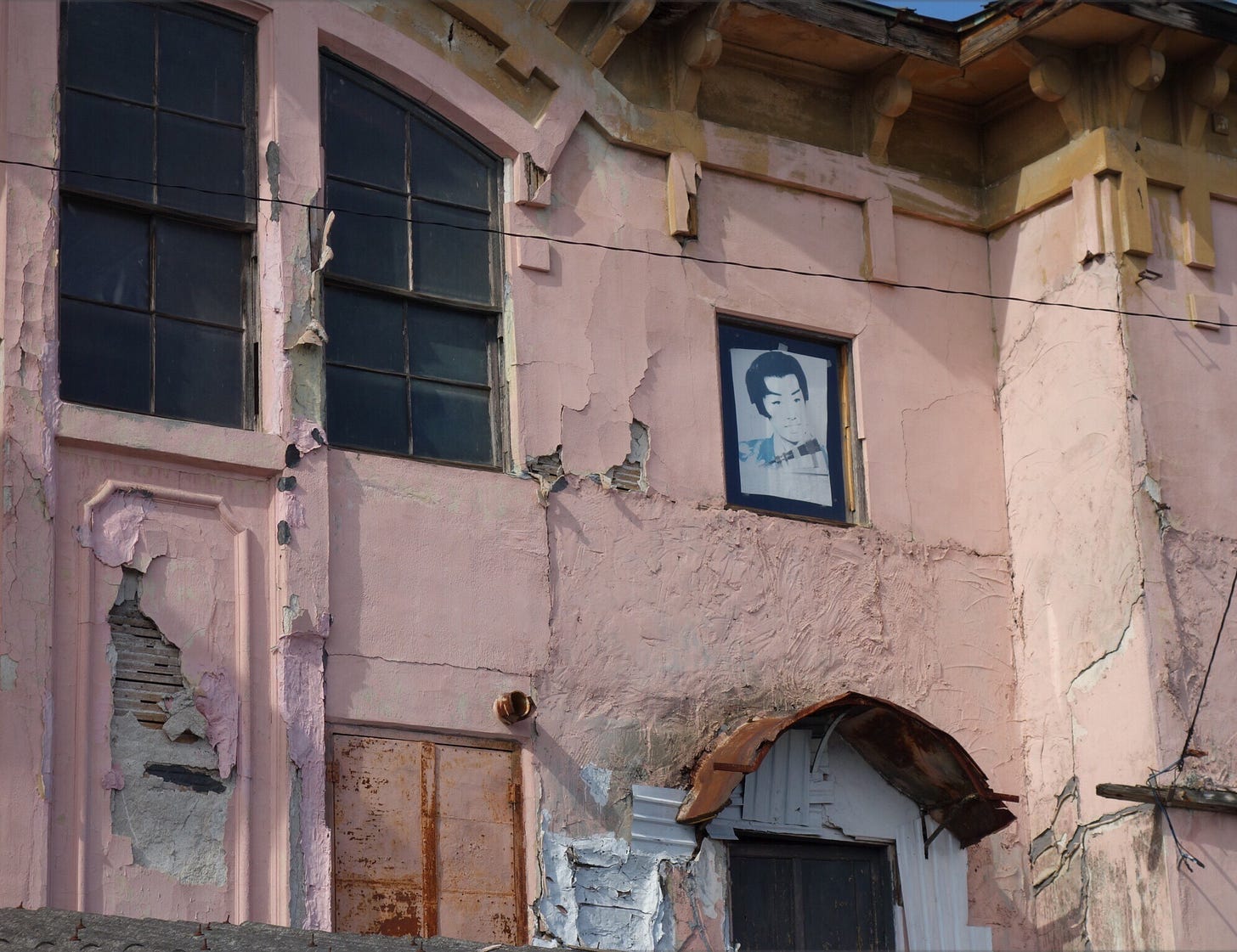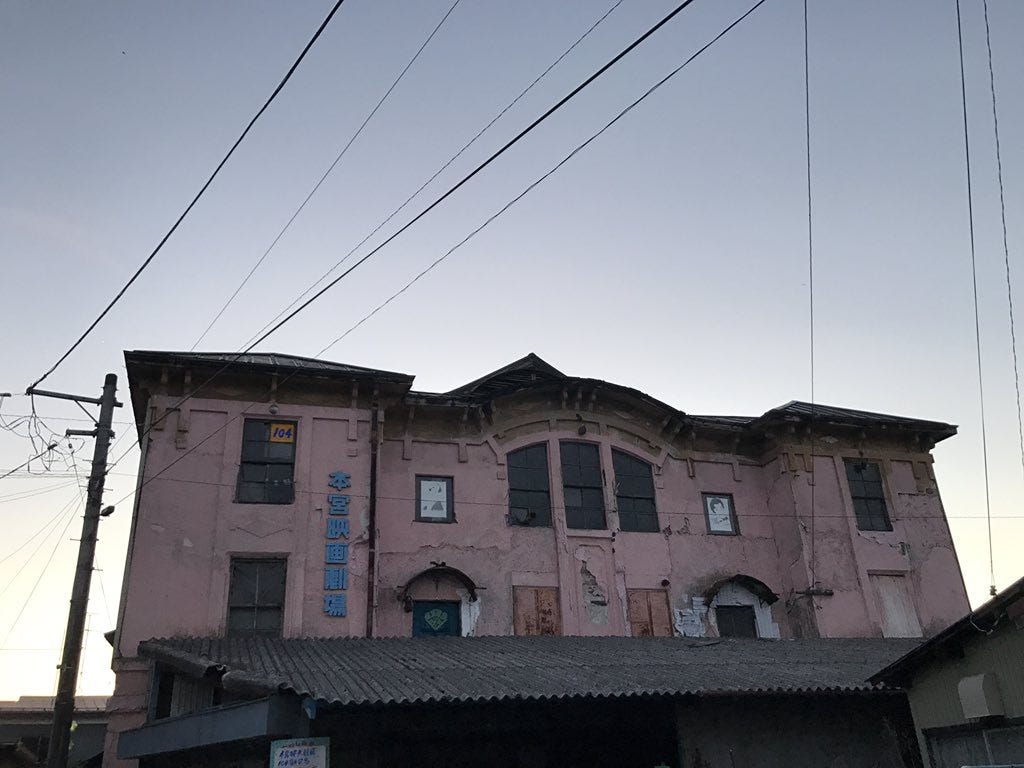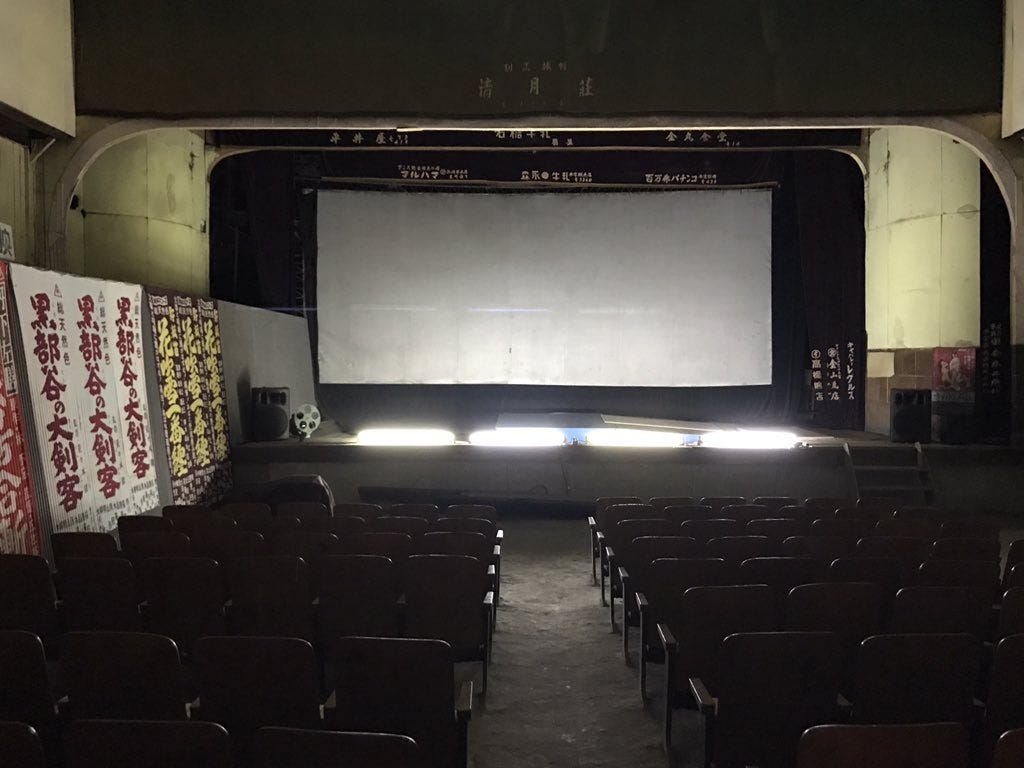Dear readers, as you may remember, I love films and, whenever possible, I love to watch them at the theater. In the past, I posted a piece about Tokyo’s funky cinemas, another one about James Bond’s adventures in Japan, and an interview with a pink film actress.
The following story is about my visit to a very interesting movie theater - a relic from another era, when cinemas had a distinct character and style, multiplexes didn’t exist and you didn’t run the risk of being offered a bucketful of carameled popcorn. Please read on.
Hidden treasures and forgotten stories can be found in the most unexpected places. Take Motomiya, Fukushima Prefecture’s smallest city both in terms of population (30,000) and size. Once a busy shukuba (rest stop and messenger station) with many inns, it has long been bypassed by modern transportation. Much of the car traffic is now diverted to nearby Koriyama and Nihonmatsu and even the Shinkansen passes through but does not stop in Motomiya. In other words, one would be hard-pressed to find a reason to visit this place.
Yet, if you venture inside the maze of back alleys of a residential district a three-minute walk from the station, you will find a crumbling three-story wooden building whose pink walls sharply contrast with the more subdued colors of the surrounding houses. The bright blue vertical sign that takes up the two upper floors reads “Motomiya Eiga Gekijo” (Motomiya Movie Theater). Another sign near the entrance proclaims that the cinema was used as a shooting location in Hamelin, a 2013 film by Tsubokawa Takushi while Roma no kyujitsu (Roman Holidays) is written everywhere (maybe the owner’s favorite film?). But the most striking signboard of all proclaims that this building is 109 years old.
This being Japan - a country where finding a building that is even just half a century old is cause for wild celebrations – it is no mean feat. Moreover, though this movie theater is in less than pristine conditions, it has survived earthquakes, urban redevelopment and wartime raids when Allied bombers targeted the local Gunze factory that manufactured cloth used to cover the wings of Mitsubishi Zero fighters.
The first incarnation of this cinema, the Motomiya-za (Motomiya Theater), was built in 1914 – the same year as Tokyo Station – by a volunteer group of 33 prominent local merchants and entrepreneurs led by Komatsu Motoji, a large landowner and politician who served as the prefectural assembly chairman, town mayor, and member of the House of Representatives.
Affectionally known by the locals as Jobudai (a name coming from the Fukushima dialect), the three-story wooden structure could accommodate 800 people and was used for many purposes. Built in the elegant Kabukiza-style, which was cutting-edge at the time, before the war it was a playhouse that showed silent movies, staged plays, and hosted performances of rokyoku, a genre of traditional narrative singing, generally accompanied by a shamisen, that was very popular in Japan during the first half of the 20th century. Besides, it was used as a public hall for election speeches, gatherings, and award ceremonies, and even as a professional wrestling venue. In this way, it quickly became the area’s most popular entertainment venue.
In 1943, Tamura Torakichi bought the building and renamed it the Motomiya Eiga Gekijo. Even after the war, it kept welcoming popular theater troupes including the one led by Umezawa Tomio’s father. However, people were increasingly hungry for movies, and screenings began in earnest in 1945 when Tamura installed a new projector.
The 1950s were the golden age of Japanese cinema and the theater was doing good business even though most new films reached Motomiya only after being shown in bigger cities. That meant that the local audiences had to wait about six months. Counting from the opening screening in Fukushima’s main city, the Motomiya Eiga Gekijo was the 50th theater to get a copy of a new release – the second to last in the Prefecture.
Then, in 1954, Tamura suddenly died and his son Shuji took over the management, expanding the theater’s programming and screening both famous foreign works (e.g. À bout de souffle and Plein soleil) and popular mysteries. The 1950s thus became the theater’s most successful period.
When, in 1955, several places in Motomiya including the police station were used as locations in Hisamatsu Seiji’s Police Diary, Shuji grabbed the chance to celebrate the big event by screening the film at the same time as it was released in Tokyo. “The film became the city’s biggest hit,” says Shuji who is now 86 years old, “resulting in a box office record-breaking revenue of 300,000 yen in three days at a time when the average monthly salary was 10,000 yen. The theater only had 800 seats, but on that occasion, we managed to cram 1000 people over the three floors.”
Unfortunately, the fat years did not last long and in the early 1960s, the number of spectators dropped sharply due to the spread of television and other factors. In a last-ditch attempt to attract people and save the business, Shuji went so far as to screen the first pink movies (soft porn) that in those years were invading the market but this move was not well received. In the meantime, debts were piling up and Shuji was forced to close down the theater.
The Motomochi Eiga Gekijo screened its last picture show in August 1963.
Shuji turned into a car salesman, and in about three years he managed to pay off his debts. By the time he retired at the age of 65, cinema complexes had become mainstream, digitalization was progressing, and reopening his beloved theater was not realistic, but Shuji had a dream: “I just couldn't give up,” he says, "I wanted to welcome audiences and show them movies again after I retired." For that purpose, and against his family’s opposition, he had continued to take care of the films he still had, and his precious projector, regularly oiling its parts and keeping it in working conditions. He did the best he could to keep the old building from falling to pieces, cleaning the hall and waiting for the day when the big white screen would come to life again.
However, Shuji had to face a harsh reality. "Like Urashima Taro [the protagonist of a famous fairy tale], there were only old people around me,” he says. “I thought it would be impossible to revive the theater."
Then, in 2008, the unexpected happened. “I was going to an ophthalmology clinic in Motomiya to get eye treatment,” Shuji says. “The doctor, who is about my age, expressed the desire to watch a movie at my theater and I just couldn’t say no. I wanted to show him and the nurses my gratitude for how well they had taken care of me.”
Suddenly, the crumbling building that was thought to be ruined forever, opened again for a private screening. Some 150 people gathered in front of the screen, and a film was shown to an audience for the first time in 45 years. But that was not all: the event was reported in the newspapers, it became a hot topic, and visitors from all over the country came to visit this ancient survivor from the golden age.
Exactly as Shuji had imagined all those years, the Motomiya Eiga Gekijo was given a chance. More screenings followed, and in 2014, a special event was held to commemorate the 100th anniversary of its opening. However, it was not all smooth sailing: in March 2011, the second and third floors were severely damaged by the Great East Japan Earthquake. Then, in October 2019, the East Japan Typhoon caused a flood. “I noticed the flooding around midnight while I was sleeping at home,” Shuji says. “Luckily, since the theater is on high land, the water only came up to just below my knees.”
Miraculously, the screen and especially the projector emerged both times unscathed. However, the front seats were flooded. “I had to scrape out the mud that had accumulated in the theater with the help of an acquaintance,” Shuji says.
When the damage was discovered on social media, support was received from all over the country, and restoration was carried out until the next spring when a revival screening was planned, but the event fell through due to the COVID-19 crisis.
(To be continued)
In the second part, we are going to tour the inside of the theater, and Tamura-san will explain how to operate his beloved projector.









Both. But probably more the first of these. I'm looking forward to reading part 2!
I really enjoyed this. Thank you for sharing!